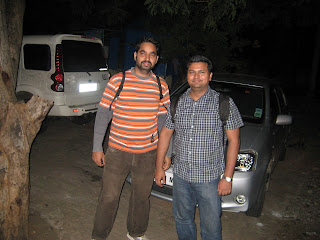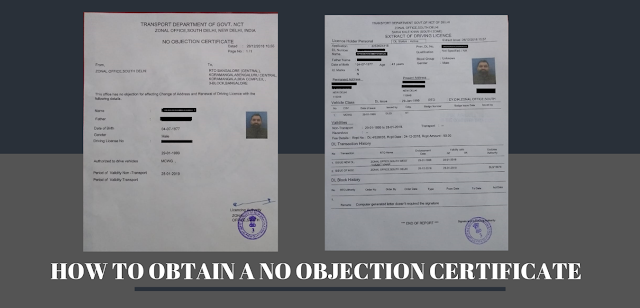Leading a Virtual Team
Coming together is a beginning; keeping together is a
process; working together is a success.” By Henry Ford.
Being the Project Manager of a virtual team can be very
challenging. The normal rules don’t apply to the virtual teams. The normal
rules for teams who are co-located does not apply to the virtual teams, it’s a
completely different ball game. The technology is changing every day and with
the advancement in technology, it has become very easy to organize, meet and
manage the teams. However, remote management or leading a virtual team has its
own advantages and challenges.
Leading in a Virtual Environment is a challenging endeavor,
but one that, if Mastered results in:
·
Improved on time/on budget performance
·
Improved innovation
·
Higher job satisfaction
·
Trust, role clarity
The competitive edge in today’s world resides in what we
have in our brains and how we exchange, rework, distribute and absorb what is
there. Therefore it is critical to map the virtual distance within your team to
identify the impact and apply management strategies to mitigate virtual
distance enhancing effectiveness. Why you should do that? Engaged teams mean
elevated team performance leading to improved business results. One of the
biggest problems is that companies usually treat their virtual teams in the
same manner as they treat teams who are co-located. As managers and leaders, we
need to understand that there are different rules of the games and different
practices for virtual teams.
What is virtual distance
Most people think of distance as a geographic separation.
However geographic separation is only a part of the distance equation. Distance
can refer to separation in time, separation between two points or emotional
separation. There was a research conducted by Karen Sobel Lojeski and Richard
Reilly with virtual teams began with the notion that geographic separation
created emotional distance between coworkers. However, they quickly realized
that geographic separation was only one and not even the most important element
in creating a sense of distance. They coined the term virtual distance to refer
to the psychological distance that results when people interact mainly through
electronic media – no matter where those communications originate from or end.
You can refer to Microsoft Executive Leadership series, “Uniting the Virtual
Workforce” introduces the concept of virtual distance. It goes a step further
and offers proven methods for measuring the costs and guidance on managing
them.
Lojeski
and Reilly crated this model to help manager ‘map’ the virtual distances on
their teams.
Physical distance since this is the aspect that most
people associate with virtuality. These
factors are based on both space and time.
· Geographic distance: Distance that can be
measured. It could be tricky because we cannot read body language.
·
Time distance: Seperation caused by time zone
differences, it affects and can upset people’s normal body clocks and can have
negative impact on performance and innovation.
·
Organizational distance: Sense of separateness
brought on by differences in organizational reporting structures, practices
these days to work across organizational boundaries, creates Us vs. them
(Global vs. Regional), same business groups in different regions.
The following Virtual Distance Estimation
tool can be used for mapping the physical distance;
Low
|
Medium
|
High
|
|
Geographic
|
Same Location
|
Same country
|
Different country
|
Time
|
Same time zone
|
Within 3 time zones
|
More than 3 time zones
|
Organizational
|
Same team
|
Similar group
|
Different GBU or company
|
Affinity distance is what
develops when we don’t establish the kinds of personal relationships that
satisfy our social needs. In business relationships, its affinity that holds
teams together despite location, nationality or organizational affiliation.
When people can’t attach themselves to one another, then work suffers.
According to Lojeski and Reilly, when managers tell us they have trouble
motivating those whom they don’t see it’s because there’s no affinity in the
group.
·
Cultural distance: Different work values cause problems
through something as simple as differences in communication styles.
·
Social Distance: Develops when people hold a
range of different social positions or status.
·
Relationship distance: The extent to which you
and other lack relationship connections from past work initiatives.
·
Interdependence distance: The psychology behind
team member’s commitment to one another or lack thereof, the sense of
inclusion.
Like Physical distance, Affinity distance has a virtual
distance estimation tool for mapping your affinity distance.
Low
|
Medium
|
High
|
|
Cultural
work ethics & values
|
Embrace
|
Respect
|
Tolerance
|
Social
|
Status based on contribution
|
Status somewhat based on contributions, some on formal title
|
Status based mainly on formal titles
|
Relationship
|
Most knew each other from previous work
|
Some knew each other from before
|
Few knew each other from previous work
|
Interdependence
|
Working towards same goals & depend on each other
|
Some working towards same goals & somewhat depend on each other
|
Do not work toward the same goals and do not feel the need to depend
on each other
|
Operational distance is a
sense that you are on a different playing field than those you work with. It is
made up of a mix of troubles that plague us occasionally. It causes people to
mentally shut others out.
·
Communications: A sense of separation from other
resulting from less than meaningful interactions, for example vague emails.
·
Multitasking: When occupied with many and varied
tasks, we tend to feel far away from pretty much everything, because we can do
more, we do.
·
Readiness distance: Feeling of detachment that
grows when technical support can’t fix problems.
·
Distribution asymmetry: A sense of being far
away from others either by virtue of isolation or too many people residing in
one place where there is a lot of power.
Low
|
Medium
|
High
|
|
Communication
|
Face-to-face or phone interactions for more than 50%
|
Face-to-face or phone interactions for 20 – 50%
|
Face-to-face or phone interactions less than 20%
|
Multitasking
|
Assigned to one project or task
|
Assigned to two or three projects with some deliverable schedule
overlap
|
Assigned to more than three projects with a high level of deliverable
schedule overlap
|
Readiness
|
No technical support problems
|
Intermittent technical support problems
|
Regular technical support problems
|
Distribution
asymmetry
|
Everyone sits together, or everyone works at a distance
|
Part of the group sits together, part work at a distance
|
Most of the team in place where there is a lot of power
|
Virtual distance, each
project, each team, is affected by these elements to some degree, not just
virtual teams. In the study conducted by Lojeski and Reilly on more than 300
different projects, some of them were where companies made a conscious decision
to collocate all of its employees. While, as expected, there was little virtual
distance from physical factors. It was also discovered that operational and
affinity distance factors created almost as much virtual distance as they found
in globally distributed teams. Virtual distance can have significant impact on
organizational performance and individual job satisfaction. It contributes to
lost revenues, lower innovation and reputation damage.
Manager are like the air traffic controllers in terms of
virtual distance. It is important to know exactly where virtual distance
problems are. Mapping virtual distance provides a way to see up close the
effects on your team. By virtual distance estimation tool for the physical,
affinity and operational distance you can do mapping of virtual distance.
Once we understand the mapping and identified the distance
and relationships that need the most attention, there are two approaches we can
take, short-term tactics or choose long term strategies. Many of these tactics
and strategies might be repetitive in nature and you might have been doing or
might have done. While doing the mapping just think about areas where you need
to pay more attention and increase your efforts. Physical distance creates the
sense that others are far away which results in a sense of isolation. While we
cannot reduce or do-away with physical distance or time zones, however there
are few practical tips that can help reduce this sense of isolation;
· - Judicious use of face to face meetings and
virtual classroom
· - Establish regular interactions or meetings to
convey a sense of reliability about when things are going to happen etc. Time
distance creates the sense of isolation and a sense that we are not well
connected. This way people will begin to experience more closeness by
anticipating work schedules that are dependable.
· - Practice precision in communication
o
Listen actively
o
Share contextual information
o
Use bullets and outlining
o
Spell things out
·
Virtual meetings provide an opportunity for
managers to bring their remote teams together
·
Multitasking, be aware of when the team members
are overburdened and help them set boundaries and priorities.
·
Part of the responsibility rests with the
individual. The team needs to make better decisions about what to work on, when
and set boundaries for themselves.
As we think about leading in virtual environment in the
affinity component, we move to long-term strategies. Key strategy is to combat
perceived isolation by building and maintaining trust. Isolation causes people
to start getting anxious or alienated and mentally switch off or become
resentful. Leaders need to encourage conversations and share experiences. There
are three important factors that lead to the development of trusting
relationships, they are, ability, integrity and good will. These are actions
that the manager should take as well as encouraging them in their employees.
Giving trust and getting trust. In order to reduce social distance, highlight
other people’s accomplishments, recognize people’s contributions and recognize
unsung heroes. Use scheduled project meeting to showcase team members. Think
back on the virtual distance map that I mentioned earlier, think of these
short-term tactics and long term strategies and understand where your
opportunities are by managing the virtual distance.
Virtual teams is a reality in almost all the organizations,
more so in IT organizations. With increased communication and the right tools
to aid in project management, virtual offices or teams can increase efficiency
and effectiveness. Project management can be the key to better task
organization and communication, and can keep those home based companies focused
on the main objective – increasing business success. It’s about time, stop
thinking of virtual teams as a special case, instead start developing
strategies, methodologies and competencies to deal with the challenges virtual
teams create.





Comments